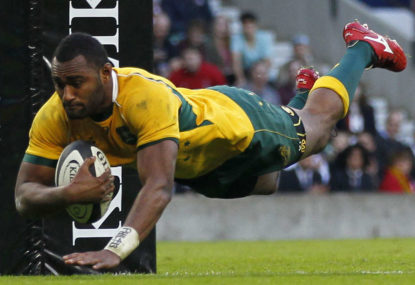If you ever go to Las Vegas, it’s worth checking out a show by the double act Penn and Teller.
These guys have been operating since the 1970s and have polished their act through an incredible work ethic.
Penn is the raconteur and orator of the show. He’s a big presence in every sense. Although Teller’s soft-spoken voice is occasionally heard in the live shows, normally he communicates only through mime and non-verbal communication.
The contrast makes for a compelling combination. You get the sense that there is a lot happening behind the scenes with Teller, and Penn’s loud presence is a convenient distraction to enable Teller to weave his magic.
If you look at successful double acts in the real and fictional world, there seems to be something in this combination of contrasts. Sherlock Holmes and Captain John Watson, Laurel and Hardy, and Heston Blumenthal’s bacon and egg ice cream.
An unlikely combination that appear to be polar opposites and yet somehow the chemistry between the two makes for an idyllic pairing.
In rugby, it’s no different. We all like to compile best XV teams with the best possible players; players who stand out from the crowd.
Let’s put Jonah Lomu, Christian Cullen, Julian Savea, Richard Kahui, Ma’a Nonu, Dan Carter and Aaron Smith in a hypothetical back line. Put them all together and it’d certainly be entertaining to watch. There’s enough strike power there to bombard several large rugby nations.
However, the light and shade, the contrast and the complexity are missing. Balance and diversity are often the missing ingredients in these hypothetical lists.
Standing at 189 centimetres, I have never had a tall girlfriend and my wife is considerably shorter than me. Biology subconsciously has dictated that I seek out a potential mating partner with the greatest gene diversification to ensure our offspring is as healthy as possible.
You only have to look at the royal families of Europe over the years to see that when you don’t stray too far from the gene pool – the results can be horrific.
If you look at the great centre partnerships of world rugby, it is interesting to note the contrast. Brian O’Driscoll and Gordon D’Arcy, Walter Little and Frank Bunce, Tim Horan and Jason Little, Will Greenwood and Mike Tindall, Phillipe Sella and his multiple partners from Didier Codorniou through to Thierry LaCroix.
Each one had their specific role and normally there was the one who stood out and dominated, and the other pushed his partner into the limelight with his wizardry or skills.
This is the excitement of the Wallaby centre pairing at the moment. Tevita Kuridrani and Christian Lealiifano could grow into a more compelling pair than Conrad Smith and Ma’a Nonu through the contrast they can offer.
There are other teams, like England, who are still looking for that balance in the centre pairing and have had trouble defining the roles of the dominant player and the silent magician.
Billy Twelvetrees has a name that suggests that he can put down roots in the midfield and offer solidity to his dominant partner Manu Tuilagi, but he seemed to perform better with Luther Burrell in the Six Nations when Tuilagi was injured.
You can look at players all through the backs and see these contrasts of styles in the good teams. Ben Smith and Julian Savea, George Gregan and Stephen Larkham, Bryan Habana and JP Pietersen – all sufficiently different that they offer balance and options on attack.
Contrast that with teams who seem to offer up much of a sameness and you wonder if a slight tweak would serve them better. Take Alex Cuthbert and George North for example. Both are great individual players in their own right and though they offer slightly different strengths, they tend to mirror each other. Get them into space and let their speed and power do the work but watch out on defence because they both have their peculiar liabilities.
It’s not just in the backs that you need this contrast. The forwards have a collaborative role but they need to offer different things. In order for Kieran Read to shine in the open, it requires somebody like Jerome Kaino or Richie McCaw to do the coal-face work.
Similarly, Duane Vermeulen can do his pilfering at the breakdown only if he has support from his back-row partners. Sam Whitelock and Brodie Retallick are accused of being too similar but they perform quite different roles.
The teams that struggle for consistency often have a lack of balance as the root of their evils. England and Australia often debate the selections they make in their back or second rows not so much because of the players they have at their disposal but, rather, the balance – and indeed contrast – they provide as a unit.
If Michael Hooper stands out in the open spaces, then who is paying for those roaming charges he accumulates back in the pack? If Courtney Lawes is doing his athletic best to find the open spaces, then who is ensuring that the work in the tight is being taken care of?
A further problem teams encounter is that they see players who stand out from the crowd and place unrealistic expectations on them. They are expected to perform as such without receiving the proper support to allow that to happen.
Players like Will Genia, Kurtley Beale and Quade Cooper are examples of players who have all shown what they’re capable of in full flight. However, when the pressure comes on, they are often expected to make a decisive play when the situation doesn’t allow for that.
They feel that pressure to create something magic on their own and even though ‘Penn’ players are capable of performing on their own, they realise too late that tricks only really come off when they are set up by the unseen or unheard ‘Teller’ players.





























































































